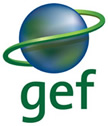Climate change vulnerability assessments
The boundaries and names shown, and the designations used on this
map do not imply official endorsement or acceptance by the United
Nations or IUCN
Name
Foret de Amboura
WDPA ID
352606
Country
SEN
IUCN category
Not Reported
Species vulnerable to climate change
According to Traits-based Vulnerability Assessments (TVAs)
| Vulnerable Species | Total Species | ||
|---|---|---|---|
| Amphibian |
1
|
7
|
|
| Bird |
41
|
283
|
|
| Mammal |
7
|
44
|
|
| Total | 49 |
334 |
14 % of bird, amphibian, and mammal species assessed are considered vulnerable to climate change
Expected species turnover
According to Species Distribution Models (SDMs)
Percentage of species turnover: Median (95% Confidence Interval)
| by 2010-2039 | by 2040-2069 | ||
|---|---|---|---|
| Bird |
|
|
|
| Mammal |
|
|
|
| Amphibian |
|
|
Vulnerable species
| Name | Order | Exposure by 2010-2039 by 2040-2069 |
IUCN Red List category | Sensitivity to climate change |
Adaptability to climate change |
|---|---|---|---|---|---|
| Caprimulgus europaeus | Caprimulgiformes |
|
LC |
|
|
| Falco peregrinus | Falconiformes |
|
LC |
|
|
| Himantopus himantopus | Charadriiformes |
|
LC |
|
|
| Lybius vieilloti | Piciformes |
|
LC |
|
|
| Pelecanus onocrotalus | Pelecaniformes |
|
LC |
|
|
| Tringa totanus | Charadriiformes |
|
LC |
|
|
| Chelictinia riocourii | Falconiformes |
|
LC |
|
|
| Numenius arquata | Charadriiformes |
|
NT |
|
|
| Rhinopomastus aterrimus | Coraciiformes |
|
LC |
|
|
| Torgos tracheliotos | Falconiformes |
|
VU |
|
|
| Apus apus | Apodiformes |
|
LC |
|
|
| Circus macrourus | Falconiformes |
|
NT |
|
|
| Falco subbuteo | Falconiformes |
|
LC |
|
|
| Ortyxelos meiffrenii | Gruiformes |
|
LC |
|
|
| Anas acuta | Anseriformes |
|
LC |
|
|
| Apus pallidus | Apodiformes |
|
LC |
|
|
| Bucorvus abyssinicus | Coraciiformes |
|
LC |
|
|
| Ciconia ciconia | Ciconiiformes |
|
LC |
|
|
| Circus pygargus | Falconiformes |
|
LC |
|
|
| Hieraaetus pennatus | Falconiformes |
|
LC |
|
|
| Lymnocryptes minimus | Charadriiformes |
|
LC |
|
|
| Tringa erythropus | Charadriiformes |
|
LC |
|
|
| Circaetus beaudouini | Falconiformes |
|
VU |
|
|
| Circus aeruginosus | Falconiformes |
|
LC |
|
|
| Aythya nyroca | Anseriformes |
|
NT |
|
|
| Streptopelia turtur | Columbiformes |
|
LC |
|
|
| Struthio camelus | Struthioniformes |
|
LC |
|
|
| Recurvirostra avosetta | Charadriiformes |
|
LC |
|
|
| Ardeotis arabs | Gruiformes |
|
NT |
|
|
| Streptopelia roseogrisea | Columbiformes |
|
LC |
|
|
| Gyps fulvus | Falconiformes |
|
LC |
|
|
| Pernis apivorus | Falconiformes |
|
LC |
|
|
| Glareola nordmanni | Charadriiformes |
|
NT |
|
|
| Marmaronetta angustirostris | Anseriformes |
|
VU |
|
|
| Passer domesticus | Passeriformes |
|
LC |
|
|
| Corvus ruficollis | Passeriformes |
|
LC |
|
|
| Cursorius cursor | Charadriiformes |
|
LC |
|
|
| Turdoides fulva | Passeriformes |
|
LC |
|
|
| Fulica atra | Gruiformes |
|
LC |
|
|
| Caprimulgus eximius | Caprimulgiformes |
|
LC |
|
|
| Burhinus oedicnemus | Charadriiformes |
|
LC |
|
|
The full description of the methodology used for this assessment can be downloaded here: Traits-based Vulnerability Assessments
Expected changes in climate suitability
| Name | By 2010-2039 | By 2040-2069 | |
|---|---|---|---|
| Lybius vieilloti | NO CHANGE |
DEC |
|
| Chelictinia riocourii | DEC |
DEC |
|
| Rhinopomastus aterrimus | NO CHANGE |
DEC |
|
| Torgos tracheliotos | NO CHANGE |
DEC |
|
| Ortyxelos meiffrenii | NO CHANGE |
DEC |
|
| Struthio camelus | DEC |
DEC |
|
| Ardeotis arabs | NO CHANGE |
DEC |
|
| Streptopelia roseogrisea | DEC |
DEC |
|
| Telacanthura ussheri | INC |
NO CHANGE |
|
| Cursorius cursor | DEC |
DEC |
|
| Turdoides fulva | DEC |
DEC |
|
| Caprimulgus eximius | NO CHANGE |
DEC |
|
| Bubo ascalaphus | INC |
NO CHANGE |
|
| Gyps rueppellii | NO CHANGE |
DEC |
|
| Lybius dubius | INC |
NO CHANGE |
|
| Tockus erythrorhynchus | NO CHANGE |
DEC |
|
| Alaemon alaudipes | INC |
INC |
|
| Alcedo cristata | INC |
INC |
|
| Alopochen aegyptiaca | NO CHANGE |
DEC |
|
| Amaurornis flavirostra | NO CHANGE |
DEC |
|
| Ammomanes deserti | INC |
INC |
|
| Anthoscopus punctifrons | NO CHANGE |
DEC |
|
| Anthreptes platurus | NO CHANGE |
NO CHANGE |
|
| Anthus similis | INC |
INC |
|
| Aquila rapax | NO CHANGE |
DEC |
|
| Ardea melanocephala | NO CHANGE |
DEC |
|
| Balearica pavonina | NO CHANGE |
NO CHANGE |
|
| Batis senegalensis | NO CHANGE |
NO CHANGE |
|
| Bubalornis albirostris | NO CHANGE |
NO CHANGE |
|
| Caprimulgus climacurus | NO CHANGE |
NO CHANGE |
|
| Caprimulgus inornatus | NO CHANGE |
DEC |
|
| Centropus senegalensis | NO CHANGE |
NO CHANGE |
|
| Cercotrichas podobe | DEC |
DEC |
|
| Chrysococcyx klaas | INC |
NO CHANGE |
|
| Ciconia abdimii | NO CHANGE |
DEC |
|
| Cinnyricinclus leucogaster | INC |
INC |
|
| Cisticola cantans | INC |
NO CHANGE |
|
| Cisticola erythrops | INC |
NO CHANGE |
|
| Clamator glandarius | NO CHANGE |
NO CHANGE |
|
| Clamator jacobinus | NO CHANGE |
NO CHANGE |
|
| Columba guinea | NO CHANGE |
DEC |
|
| Coracias abyssinicus | NO CHANGE |
NO CHANGE |
|
| Corvus albus | NO CHANGE |
DEC |
|
| Cossypha niveicapilla | INC |
NO CHANGE |
|
| Cuculus clamosus | INC |
NO CHANGE |
|
| Dendropicos elachus | NO CHANGE |
DEC |
|
| Dryoscopus gambensis | INC |
NO CHANGE |
|
| Emberiza flaviventris | INC |
NO CHANGE |
|
| Emberiza striolata | INC |
INC |
|
| Emberiza tahapisi | NO CHANGE |
DEC |
|
| Eremomela icteropygialis | NO CHANGE |
DEC |
|
| Eremomela pusilla | NO CHANGE |
NO CHANGE |
|
| Eremopterix nigriceps | NO CHANGE |
DEC |
|
| Erythropygia galactotes | INC |
INC |
|
| Estrilda melpoda | INC |
NO CHANGE |
|
| Euplectes franciscanus | NO CHANGE |
NO CHANGE |
|
| Eupodotis melanogaster | INC |
NO CHANGE |
|
| Eupodotis savilei | DEC |
DEC |
|
| Falco biarmicus | DEC |
DEC |
|
| Falco chicquera | NO CHANGE |
DEC |
|
| Gorsachius leuconotus | INC |
NO CHANGE |
|
| Haliaeetus vocifer | NO CHANGE |
NO CHANGE |
|
| Hieraaetus spilogaster | INC |
NO CHANGE |
|
| Hippolais pallida | INC |
NO CHANGE |
|
| Hirundo obsoleta | INC |
INC |
|
| Hirundo senegalensis | NO CHANGE |
NO CHANGE |
|
| Lagonosticta senegala | NO CHANGE |
DEC |
|
| Lamprotornis chalybaeus | NO CHANGE |
DEC |
|
| Lamprotornis pulcher | NO CHANGE |
DEC |
|
| Lamprotornis purpureus | INC |
NO CHANGE |
|
| Leptoptilos crumeniferus | INC |
INC |
|
| Lonchura cantans | DEC |
DEC |
|
| Melaenornis edolioides | INC |
NO CHANGE |
|
| Melierax metabates | NO CHANGE |
DEC |
|
| Merops albicollis | DEC |
DEC |
|
| Merops nubicus | NO CHANGE |
DEC |
|
| Mesopicos goertae | NO CHANGE |
DEC |
|
| Mirafra cantillans | NO CHANGE |
DEC |
|
| Mirafra cordofanica | DEC |
NO CHANGE |
|
| Mirafra rufocinnamomea | INC |
NO CHANGE |
|
| Muscicapa aquatica | INC |
NO CHANGE |
|
| Myrmecocichla aethiops | NO CHANGE |
DEC |
|
| Nectarinia pulchella | NO CHANGE |
DEC |
|
| Nectarinia venusta | INC |
INC |
|
| Nilaus afer | NO CHANGE |
NO CHANGE |
|
| Oenanthe heuglini | DEC |
DEC |
|
| Otus leucotis | INC |
INC |
|
| Passer griseus | NO CHANGE |
DEC |
|
| Passer luteus | DEC |
DEC |
|
| Passer simplex | INC |
NO CHANGE |
|
| Phoeniculus purpureus | NO CHANGE |
DEC |
|
| Platalea alba | NO CHANGE |
NO CHANGE |
|
| Plectropterus gambensis | NO CHANGE |
NO CHANGE |
|
| Plegadis falcinellus | DEC |
DEC |
|
| Ploceus vitellinus | NO CHANGE |
NO CHANGE |
|
| Prionops plumatus | INC |
NO CHANGE |
|
| Pterocles lichtensteinii | INC |
INC |
|
| Pterocles senegallus | INC |
INC |
|
| Sagittarius serpentarius | INC |
NO CHANGE |
|
| Serinus leucopygius | NO CHANGE |
DEC |
|
| Spiloptila clamans | DEC |
DEC |
|
| Sporopipes frontalis | NO CHANGE |
DEC |
|
| Stigmatopelia senegalensis | NO CHANGE |
DEC |
|
| Streptopelia semitorquata | INC |
NO CHANGE |
|
| Streptopelia vinacea | NO CHANGE |
NO CHANGE |
|
| Tchagra senegalus | NO CHANGE |
DEC |
|
| Terpsiphone viridis | INC |
INC |
|
| Thalassornis leuconotus | INC |
NO CHANGE |
|
| Threskiornis aethiopicus | NO CHANGE |
DEC |
|
| Uraeginthus bengalus | NO CHANGE |
NO CHANGE |
|
| Vidua chalybeata | NO CHANGE |
NO CHANGE |
|
| Vidua paradisaea | NO CHANGE |
NO CHANGE |
|
| Zosterops senegalensis | INC |
NO CHANGE |
The full description of the methodology used for this assessment can be downloaded here: Species Distribution Model










